| 첨부 '2' |
|---|
| author | Jong Seung Kim |
|---|---|
| journal | Journal of the American Chemical Society |
| Homepage | http://orgchem.korea.ac.kr/ |

안주성
석박사통합과정
Immuno-photodynamic therapy (IPDT) has emerged as a new modality for cancer treatment. Novel photosensitizers can help achieve the promise inherent in IPDT, namely, the complete eradication of a tumor without recurrence. We report here a small molecule photosensitizer conjugate, LuCXB. This IPDT agent integrates a celecoxib (cyclooxygenase-2 inhibitor) moiety with a near-infrared absorbing lutetium texaphyrin photocatalytic core. In aqueous environments, the two components of LuCXB are self-associated through inferred donor–acceptor interactions. A consequence of this intramolecular association is that upon photoirradiation with 730 nm light, LuCXB produces superoxide radicals (O2–•) via a type I photodynamic pathway; this provides a first line of defense against the tumor while promoting IPDT. For in vivo therapeutic applications, we prepared a CD133-targeting, aptamer-functionalized exosome-based nanophotosensitizer (Ex-apt@LuCXB) designed to target cancer stem cells. Ex-apt@LuCXB was found to display good photosensitivity, acceptable biocompatibility, and robust tumor targetability. Under conditions of photoirradiation, Ex-apt@LuCXB acts to amplify IPDT while exerting a significant antitumor effect in both liver and breast cancer mouse models. The observed therapeutic effects are attributed to a synergistic mechanism that combines antiangiogenesis and photoinduced cancer immunotherapy.
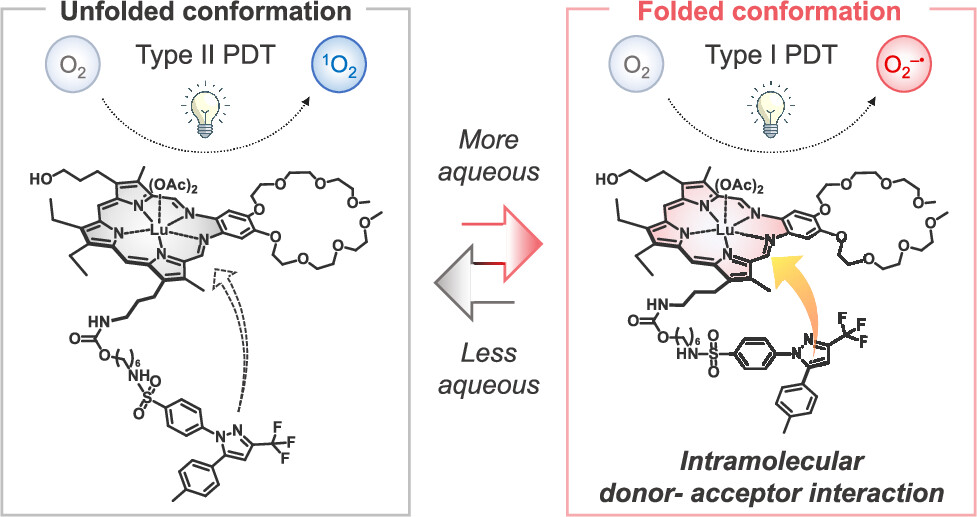
-
Read More

Long-Range Charge Transport in Molecular Wires
Long-range charge transport (LRCT) in molecular wires is crucial for the advancement of molecular electronics but remains insufficiently understood due to complex transport mechanisms and their dependencies on molecular structure. While sho... -
Read More

Generative Deep Learning-Based Efficient Design of Organic Molecules with Tailored Properties
Innovative approaches to design molecules with tailored properties are required in various research areas. Deep learning methods can accelerate the discovery of new materials by leveraging molecular structure–property relationships. I... -
Read More

Ru2P/Ir2P Heterostructure Promotes Hydrogen Spillover for Efficient Alkaline Hydrogen Evolution Reaction
Efficient and durable electrocatalysts toward alkaline hydrogen evolution reaction (HER) are of great significance for the widespread application of anion-exchange membrane water electrolyzer (AEMWE). Numerous single-phase catalysts, such a... -
Read More

Spatiotemporal Nitric Oxide Modulation via Electrochemical Platform to Profile Tumor Cell Response
Nitric oxide (NO) is a gaseous molecule intricately implicated in oncologic processes, encompassing the modulation of angiogenesis and instigating apoptosis. Investigation of the antitumor effects of NO is currently underway, necessitating ... -
Read More

Lutetium Texaphyrin–Celecoxib Conjugate as a Potential Immuno-Photodynamic Therapy Agent
안주성 석박사통합과정 Immuno-photodynamic therapy (IPDT) has emerged as a new modality for cancer treatment. Novel photosensitizers can help achieve the promise inherent in IPDT, namely, the complete eradication of a tumor without recurrenc... -
Read More

High Hydrogen Storage in Trigonal Prismatic Monomer-Based Highly Porous Aromatic Frameworks
Hydrogen storage is crucial in the shift toward a carbon-neutral society, where hydrogen serves as a pivotal renewable energy source. Utilizing porous materials can provide an efficient hydrogen storage solution, reducing tank pressures to ... -
Read More
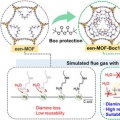
Boc Protection for Diamine-Appended MOF Adsorbents to Enhance CO2 Recyclability under Realistic Humid Conditions
Among the various metal–organic framework (MOF) adsorbents, diamine-functionalized Mg2(dobpdc) (dobpdc4– = 4,4-dioxidobiphenyl-3,3′-dicarboxylate) shows remarkable carbon dioxide removal performance. However, applying diam... -
Read More

Double-Walled Tubular Heusler-Type Platinum–Ruthenium Phosphide as All-pH Hydrogen Evolution Reaction Catalyst Outperforming Platinum and Ruthenium
Nanostructured ionic compounds have driven major technological advancements in displays, photovoltaics, and catalysis. Current research focuses on refining the chemical composition of such compounds. In this study, a strategy for creating s... -
Read More

Seebeck Effect in Molecular Wires Facilitating Long-Range Transport
The study of molecular wires facilitating long-range charge transport is of fundamental interest for the development of various technologies in (bio)organic and molecular electronics. Defining the nature of long-range charge transport is ch... -
Read More
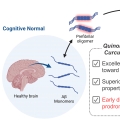
Early onset diagnosis in Alzheimer’s disease patients via amyloid-β oligomers-sensing probe in cerebrospinal fluid
Amyloid-β (Aβ) oligomers are implicated in the onset of Alzheimer’s disease (AD). Herein, quinoline-derived half-curcumin-dioxaborine (Q-OB) fluorescent probe was designed for detecting Aβ oligomers by finely tailoring ... -
Read More
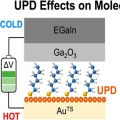
Thermopower in Underpotential Deposition-Based Molecular Junctions
Underpotential deposition (UPD) is an intriguing means for tailoring the interfacial electronic structure of an adsorbate at a substrate. Here we investigate the impact of UPD on thermoelectricity occurring in molecular tunnel junctions bas... -
Read More
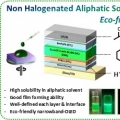
Eco-friendly solution-processed narrowband OLEDs using non-halogenated aliphatic solvent systems
In general, fabricating multilayer structures in solution-processed organic light-emitting diodes (OLEDs) presents challenges owing to the potential degradation of the initial film during subsequent processing steps. Furthermore, these devi... -
Read More
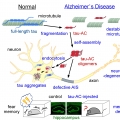
Self-Aggregating Tau Fragments Recapitulate Pathologic Phenotypes and Neurotoxicity of Alzheimer's Disease in Mice
In tauopathy conditions, such as Alzheimer's disease (AD), highly soluble and natively unfolded tau polymerizes into an insoluble filament; however, the mechanistic details of this process remain unclear. In the brains of AD patients, o... -
Read More
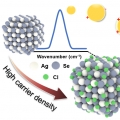
Ultranarrow Mid-infrared Quantum Plasmon Resonance of Self-doped Silver Selenide Nanocrystal
The infrared quantum plasmon resonance (IR QPR) of nanocrystals (NCs) exhibits the combined properties of classical and quantum mechanics, potentially enabling unprecedented optics. However, research on the development of localized surface ... -
Read More
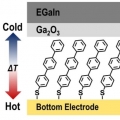
Molecular Thermoelectricity in EGaIn-Based Molecular Junctions
Understanding the thermoelectric effects that convert energy between heat and electricity on a molecular scale is of great interest to the nanoscience community. As electronic devices continue to be miniaturized to nanometer scales, thermor... -
Read More
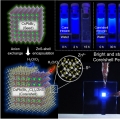
Perovskite Nanocrystals Protected by Hermetically Sealing for Highly Bright and Stable Deep-Blue Light-Emitting Diodes
Metal–halide perovskite nanocrystals (NCs) have emerged as suitablelight-emitting materials for light-emitting diodes (LEDs) and other practicalapplications. However, LEDs with perovskite NCs undergoenvironment-induced and ion-migratio... -
Read More
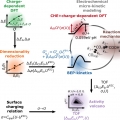
The importance of a charge transfer descriptor for screening potential CO2 reduction electrocatalysts
It has been over twenty years since the linear scaling of reaction intermediate adsorption energies started to coin the fields of heterogeneous and electrocatalysis as a blessing and a curse at the same time. It has established the possibili... -
Read More
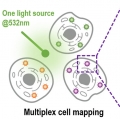
Resonant Raman-Active Polymer Dot Barcodes for Multiplex Cell Mapping
Resonance Raman spectroscopy is an efficient tool for multiplex imaging because of the narrow bandwidth of the electronically enhanced vibrational signals. However, Raman signals are often overwhelmed by concurrent fluorescence. In this stud... -
Read More

Decoding the Roles of Amyloid-β (1-42)'s Key Oligomerization Domains toward Designing Epitope-Specific Aggregation Inhibitors
Fibrillar amyloid aggregates are the pathological hallmarks of multiple neurodegenerative diseases. The amyloid-β (1-42) protein, in particular, is a major component of senile plaques in the brains of patients with Alzheimer’s di... -
Read More
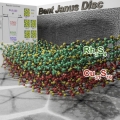
Flattening bent Janus nanodiscs expands lattice parameters
Nanoscale lattice parameter engineering is a potentially powerful tool for tailoring the electronic properties of nanomaterials. The nascent strain in juxtaposed hetero-interfaces of nanocrystals was recently shown to substantially affect t...


 Spatiotemporal Nitric Oxide Modulation via Electrochemical Pl...
Spatiotemporal Nitric Oxide Modulation via Electrochemical Pl...
 High Hydrogen Storage in Trigonal Prismatic Monomer-Based Hig...
High Hydrogen Storage in Trigonal Prismatic Monomer-Based Hig...